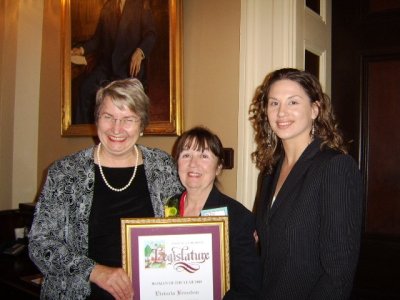LAKE COUNTY – Seizures of illicit marijuana plants in Lake County once again led the state in volume for 2007, with officials reporting that most of those plants were found on public lands. {sidebar id=62}
For the second year in a row, Lake County's marijuana seizures led the state's Campaign Against Marijuana Program (CAMP), according to Capt. Dennis Cullen, who oversees U.S. Forest Service law enforcement activities in the Mendocino and El Dorado National Forests.
The California Attorney General's Office reported that the marijuana-growing season starts in mid-April, with harvests ending in late September or early October.
During the 2007 marijuana eradication season, there were about 507,000 plants seized in Lake County – a number which included private and public lands, and indoor and outdoor grows, according to Cullen.
Other counties in the top five for 2007 are Humboldt (271,056 plants); Shasta (270,728 plants); Mendocino (220,436 plants); and Tulare (160,591 plants).
Along with the plant seizures in Lake County, Sheriff Rod Mitchell said there 24 firearms seized, along with 898.5 pounds of processed marijuana. Seven arrests also were made.
In comparison, in 2006, the county had 344,241 plants seized, with 10 firearms, 704 pounds of processed marijuana and 10 arrests, officials reported.
Statewide, 2007 was another record-breaking year for CAMP, the Attorney General's Office told Lake County News.
“We've seen an increase each year,” said Gareth Lacy, an Attorney General's Office spokesman.
In 2007, CAMP eradicated 2,905,021 plants, which had a street value of $11.6 billion, the Attorney General's Office reported.
Of those seized plants, 75 percent (2,168,223 plants) were on public lands with the remaining 25 percent (736,798) on private lands. CAMP conducted 472 raids, made 53 arrests and seized 41 shotguns, handguns, assault rifles, and other firearms.
One reason for the increase in seizures in 2007, said Lacy, was increased, full-time use of helicopters, which made remote areas accessible for law enforcement.
Most of the arrests linked with illegal marijuana grows took place without incident or had short foot pursuits, said Mitchell.
“The dangerous work is sizing up the garden on land before you go in and do a raid,” said Mithcell. “That's when my staff is at the greatest risk.”
Mitchell said it's pure speculation as to why the plant seizures have continued to rise, however, like Lacy, he credited equipment – in this case, enhanced technology used in overflights that allow officers to more readily identify pot gardens.
“I'm also of the impression that some of the lenient interpretations of marijuana laws in different places in the state led some to believe that it's going to be more lenient than the law allows everywhere,” said Mitchell.
However, perhaps more important is the increasing number of people using remote public lands for growing illegal drugs, said Mitchell, a practice that poses dangers to humans, animals and the environment.
Mitchell said one of his lead deputies in tracking illicit marijuana, Steve Brooks, guessed that there is enough black plastic tubing used for drip line still left in the forest to stretch from the Oregon border to Mexico.
Also left behind, said Mitchell, are dangerous chemicals. To clean up and restore one acre of land where these grows have taken place can cost $12,000.
Mitchell said the destruction of public lands is a major concern. “This can't be compared to any other agriculture enterprise,” he said.
Cullen said his agency works closely with the sheriff's office on the eradications.
“It's one big cooperative effort,” he said.
Cullen said he agrees with Mitchell's thoughts about why marijuana growing activity is increasing, especially the desire for remote areas, which he said are a favorite target of growers – not just in Lake County.
“Lake County is symptomatic of many areas in Northern California,” said Cullen, adding that the problem of illicit marijuana growing is present around the western United States.
Cullen said that marijuana growing is a year-round activity. “They are in a business,” he said of growers, explaining that, when it's not growing season, they're refurbishing water lines and getting young plants started.
He said the National Forest has an accelerated effort for detection and eradication, with different enforcement techniques to disrupt growing activity and identify who is running supplies and drugs. In doing so, “We're finding a lot of supplies moving in and out of the area.”
Mitchell said Mexican crime rings are believed to be behind the remote grows, a belief he said that was reinforced through arrestee interviews.
The profits, he said, allow the groups to buy cheap, black-market materials with which to manufacture methamphetamine.
The Attorney General's Office also pointed to the Mexican drug trafficking organizations as being responsible for the gardens, reporting that, in 2006, 80 percent of the eradicated gardens were being operated on public land by Mexican drug trafficking organizations. The gardens were reportedly protected by armed guards, contained booby traps and clandestine escape routes.
On the increasing numbers of people moving into the forest to grow marijuana, Cullen said, “I don't think it's an anomaly, I think it's a transition.”
E-mail Elizabeth Larson at This email address is being protected from spambots. You need JavaScript enabled to view it..
{mos_sb_discuss:2}



 How to resolve AdBlock issue?
How to resolve AdBlock issue? 





